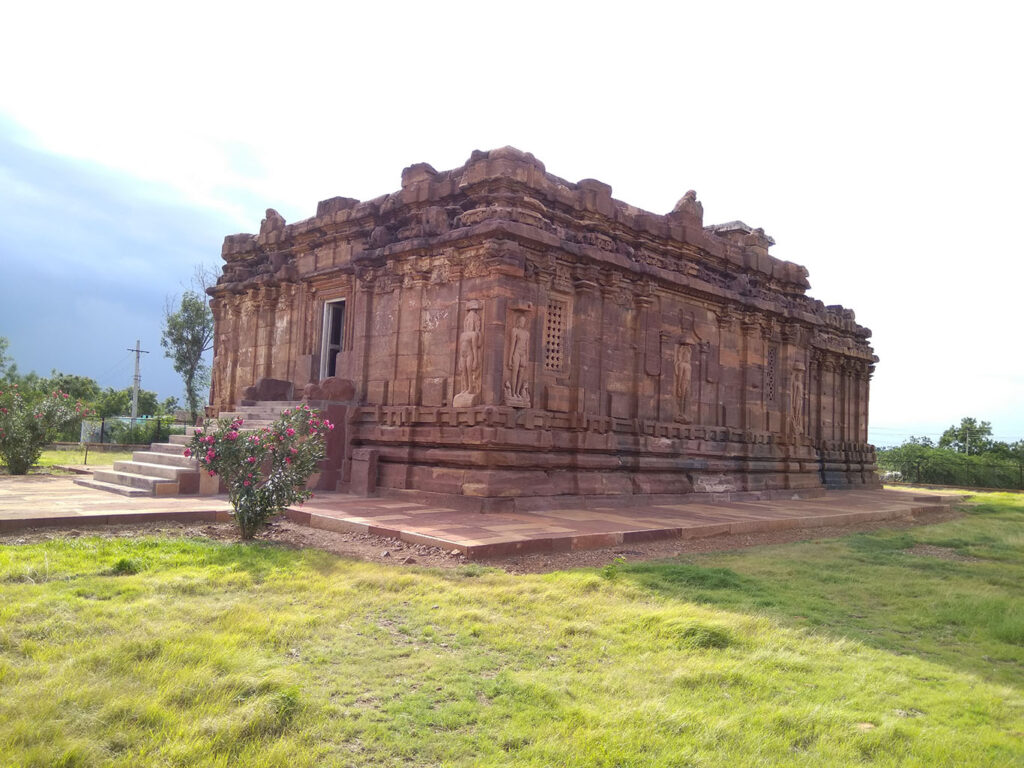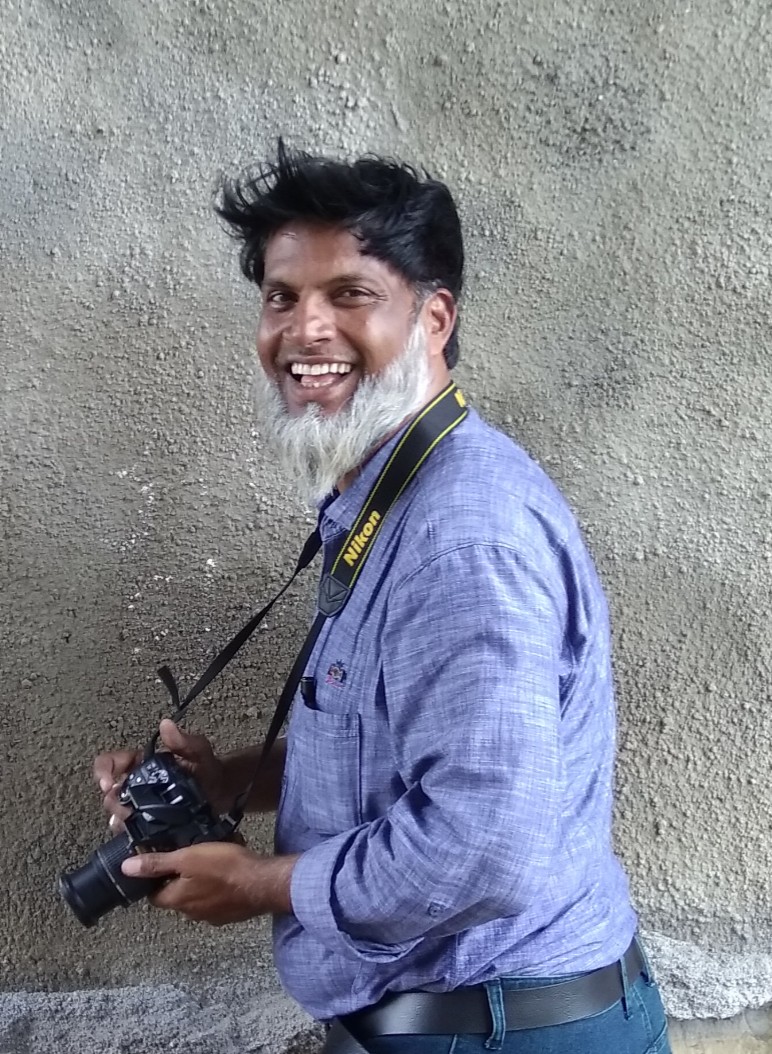The origins of Jainism, a faith that expresses the śramaṇic stream of thought, goes back to pre-Aryan times. Since sources for this hoary past are obscure, we have to fall back upon secondary courses for the reconstruction of Jaina history and thought. But one thing is certain; scholars today accept that the Jaina religion existed much before Vardhamāna Mahāvīra, the last of the 24 tīrthaṅkaras. Jaina tradition says that the Jaina religion is eternal, even though preached successively by the tīrthaṅkaras in different time-cycles.
The Karnataka origins
Jainism is said to have entered Karnataka after the fourth century, and retained its popularity till the mediaeval period. Jainism wielded its influence in North Karnataka, and Gulbarga region became a stronghold of Jainism. Rulers from great dynasties such as Rāṣṭrakūṭas of Mānyakheṭa (modern Malkhed), and Cālukyas of Badāmī and Kalyāṇī patronised the faith. Many basadis (Jaina temples with residences of scholars attached to the shrine), monasteries and sculptures of tīrthaṅkaras, yakṣas and yakṣiṇīs etc., are found scattered in a dilapidated condition even today in North Karnataka. The Bagalkot, Bijapur, Gulbarga and Bidar districts of North Karnataka have inherited a unique cultural heritage, as these areas were ruled by such ambitious royal dynasties as Rāṣṭrakūṭas, Cālukyas, Yādavas, Kalachurīs, Vijayanagara emperors, Bahāmanī sultans and their off-shoots. As a result, this region acquired many religions and cults. Both Vedic and non-Vedic religions have left deep impressions on the socio-religious life of the people. Of the non-Vedic religions, Jainism played an important role in the region. Under the royal patronage of Rāṣṭrakūṭas and the Cālukyas, Jainism became a very popular cult.
Eminent Jaina preachers, ascetics and monks like Jinasena, Guṇabhadra, Mahāvīra, Akalanka, Indranandi, Puśpadanta, tri-ratnas of Kannada literature namely Pampa, Ponna and Ranna flourished in this region. Hence an attempt is made in this article to throw some light on the Jaina basadis and sculptures lying orphaned in the temple premises in this region.
The Jaina basadis
Before the 12th century, Jainism was the dominating religion of this region. About a third of the total population were Jains. Especially during the rule of Rāṣṭrakūṭas and Chalukyas and their feudatories, namely the Haihayahs and Kalachurīs, Jainism reached its peak. Many basadis were built throughout the region. Many places of this region became popular as Jain kṣetras. These centres have played an important role in the socio-religious life of the people of this region. Almost each village had a Jaina basadi that served as an important centre of Jainism.
Hallur, ancient Hallavūr, lies 23 km from Bagalkot, and is a prominent Jain centre that grew under the Cālukyas of Badāmī. On the outskirts of the town is a beautiful but ruined Jaina temple, locally called mele gudi, the upper temple. It is built in the Badāmī Cālukyan style; it has a square sanctum, ardha maṇḍapa, and a spacious navaraṅga. It shows the later intrusion of a sivaliṅga in the sanctum. Its lintel has no images. The ardha maṇḍapa is ordinary and the navaraṅga has 20 pillars, four of which are ornamental. On either side of the ardha maṇḍapa, dvārapālakas and Jaina figures can be seen. On the outer walls of the navaraṅga, 24 tīrthaṅkaras in samabhaṅgī are well carved. The entrance to the navaraṅga has jālandharas on both sides. The Jain basadi looks very attractive at dusk. There is a ninth century inscription on the maṇḍapa pillar of the upper temple on which only the name “Trimuśṭi Deva” can be made out.
A delightful legend
Babanagar is an ancient Jain centre 32 km from Bijapur, an important town of the Kalachurī era. The Pārśvanātha basadi, situated in a narrow lane of the town, is completely renovated. It is a two-storied building. The garbhagṛha has a main gate which is so small that only a single person can enter at a time. The gate of the garbhagṛha is flanked by yakṣa and yakṣiṇī figurines carved in black stone and bear Jina icons on their heads. The image of Pārśvanātha, the main deity installed in the centre, is carved in green-black granite, and is 45 cm in height. It is a mesmerising sculpture, with its face exuding tranquillity and serenity. On the main platform there are several bronze images of Jinas. On the second floor there is a mānastambha, which is just above the main entrance of the basadi.
Legend has it that the idol of Pārśvanātha was in the possession of the Muslim queen of an Ādilśāhī ruler. She kept this idol as a toy among her valuables. Once, so the legend goes, when she was suffering from severe pain and no treatment worked, a layman from the village dreamed about the Jina sculpture. He went to the Ādilśāhī sultān and offered to treat the severe pain of the queen. The sultan agreed to it. The man applied water to her affected part, and she was cured. The happy sultān asked what the man wanted as a reward. “I want the Jina idol in the queen’s collection,” replied the man. The sultān granted the wish. On his way back to his village, as he rested at a place, an old man who was from Gundwad in Raybag taluka, also a traveller, saw the Pārśvanātha idol. He was so happy that he gave a bath to the idol with the drinking water he was carrying during the travel. Till today this tradition continues as on every Ugādi Amāvas people from Gundawad village bring water from River Krishna in a number of small pots, and give a bath to the idol. Meanwhile, the Ādilśāhī sultān gave a grant of 30 acres of land to the Pārśvanātha basadi.
Towards the west of Bijapur city at the distance of six kilometres, near the dargah of a Sufi saint Khwajah Aminuddin Aala, there is an ancient basadi of Sahasraphaṇi Pārśvanātha. It is roughly square and is strengthened by semi-polished stones. The small entrance at the south leads to the rectangular assembly hall which opens to three doors of the temple all along the western wall. There are several Jaina images on the raised platform at the centre. The Sahasraphaṇi Pārśvanātha idol is claimed to be 1,500 years old. The graceful black idol of Pārśvanātha is sitting in the padmāsana posture. Generally a seven-hooded serpent covers the head of Pārśvanātha, but here the serpent has 1,008 hoods. Even more remarkable is the fact that all the hoods are interconnected and during the abhiṣeka, the milk poured over the central hood spreads, and all the 1008 hoods shower milk over Pārśvanātha.
Ingalgi village of Chittapur taluka, four miles away from the Shahbad railway station, has a large number of temples and other artefacts associated with Jainism. One temple dedicated to Jina was found in a dilapidated condition. Another was a heap of ruins. They must have been fair specimens of the Kalāyṇī Cālukyan architecture in their original state. The first basadi is situated in the heart of the village. This basadi was constructed by Jakkaladevi, a queen of the Cālukya king Vikramāditya-VI, and the circumstances of its origin have been narrated in an interesting manner in the inscriptional record. The inscription, now on a stone at the entrance, is in old Kannada script, and dates back to the 11th century. The inscribed slab had fallen into a corner of the madhya maṇḍapa of the basadi.
Lines 19 to 45 narrate an interesting story about the installation of the Jina image and the making of an endowment. It states that on an auspicious day, a certain trader brought an image of Lord Mahāmanikya to Jakkalādevi, who looked upon the image with great admiration. The Cālukya king happened to drop in at this moment. Impressed by the sight, he looked at her face and said, “This image of Jina is peerless in beauty. He is the traditional tutelary deity of your household. Do install this image in the township of your authority; it will for ever be a source of inspiration for the followers of your faith!”
Thus instructed by the king, she installed the image and caused a magnificent basadi to be constructed over it, a model for others to emulate. Then she prayed to her family teacher, Indrasena Bhaṭṭāraka, to receive an endowment duly bestowed by her for its maintenance.
Another basadi, now totally renovated in modern style, is popularly called Jakkavana or Vaijakkavana Gudi. It is located outside the village. There is an image of Queen Jakkalādevi whom the local people address as Kuśmaṇḍinī yakṣī, but I could not get any symbol of Kuśmaṇḍinī yakṣī at the site. The garbhagṛha has a sculpture of Mahāvīra on a simha pīṭha. Jina figures are carved on the door jambs.


 [/column]
[/column]